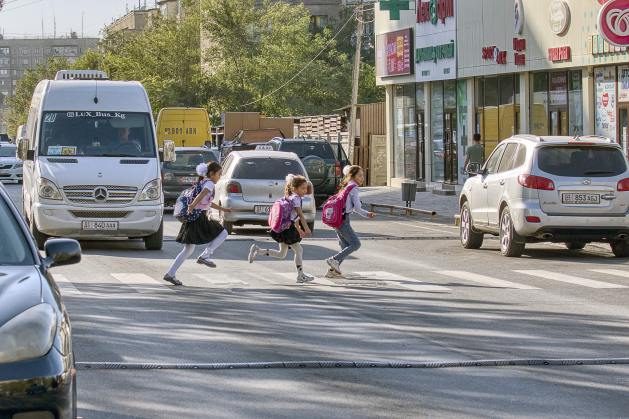Global Road Safety Crisis: Three Questions to Ask to Help Solve It

GENEVA, Feb 17 (IPS) - When we think about global crises, road safety isn’t one that comes to mind. The reality is that unsafe roads is a health crisis gone rogue.
Unlike the COVID-19 pandemic, road traffic injuries are the leading cause of death from people between the ages of 5-29. And, with an estimated 1.35 million fatalities and 50 million non-fatal injuries every year, unsafe vehicles and roads affect everyone and impact several areas of development – including environmental sustainability.
In 2015, the United Nations raised the alarm. The 2030 Global Development Agenda expressly recognizes that road safety can be improved by governments providing access to safe, affordable and “greener” ways of moving, including public transport. (Sustainable Development Goal 11.2)
There are plenty of things that the UN is doing to solve this global crisis, but it cannot solve it alone. Here are three questions to spur action towards making roads safer for road users everywhere.
How committed are our governments to solving the road safety crisis?
To solve this crisis, we need a show of commitment, especially from governments. One way of doing that is for leaders across the developed and developing world to take an active role in safe and sustainable mobility.
The UN General Assembly High-Level Meeting on Improving Road Safety on 30 June 2022 in New York could be the moment in history when UN member states commit to consciously prioritize and fund a development assistance package of safe and clean mobility measures in low- and middle-income countries.
This package could include designing and implementing safe modes of transport that are equally low-emission solutions such as affordable public transportation; accessible walking and cycling lanes; or safe and clean used vehicle standards.
It’s time for governments to show support, attend the High-Level Meeting and make the case for why road safety is a national priority and a priority for development assistance. And, in turn, for G7 countries to include road safety as a priority in the G7 Summit Communique 26-28 June 2022, just days before the UN High-Level Meeting on Road Safety.
How can we collectively build capacity in countries with high road fatalities?
The WHO together with UN Regional Commissions have helped structure a targeted action plan on road safety for the global community to rally around and implement. However, with more than 90% of road traffic fatalities occurring in low- and middle-income countries, with Africa as the hardest hit region, mobilizing finances to implement the plan remains a critical challenge.
The UN is crowding in and around a wide range of partners to ensure the transfer of technical knowledge, best practices, and financial resources to the countries that need help the most.
Since 2018, the United Nations Road Safety Fund has been playing a coordinating role among UN agencies to support governments through projects to improve land use for walking and cycling lanes, driving licensing, vehicle inspection,speed enforcement,safe school zone design and emergency post-crash response systems.
FIA Foundation, the World Bank’s Global Road Safety Facility, the International Federation of the Red Cross, Bloomberg Philanthropies, NGOs, regional Road Safety Observatories and major government and corporate funders are among those consulted and engaged in designing and delivering these projects.
From Armenia to Paraguay to West Africa, UNRSF now serves 30 countries with new calls for proposals to respond to country-led priorities that catalyze investments for better road safety.
How do we advocate for effective road safety financing?
Awareness-raising and advocacy of road safety financing is a game changer. The UN’s Special Envoy for Road Safety, Jean Todt’s, advocacy efforts helped launch the UN Road Safety Fund and raised close to $20 million dollars for related UN road safety performance reviews in Africa and capacity building projects in developing countries across the world.
Organisations such as the Global Alliance of NGOs for Road safety are there to support and empower local groups and community-based organisations working on road safety. And at the grassroots we can replicate and take part in global advocacy initiatives such as the biennial UN Global Road Safety Week.
The week’s 2021 edition, through a Streets for Lifecampaign, called for 30 km/h speed limits worldwide on streets with mixed vehicular and pedestrian traffic. Or the Global Road Safety Film Festival on 21-22 February 2022, which screens short films from all over the world to help explain the challenges and solutions to improve road safety.
For the Second Decade of Action for Road Safety 2021 – 2030, success hinges on the marriage between safe, sustainable mobility and targeted financing, which promises to bear fruit for people and the planet. Together with UN efforts, it’s time we all started doing more about it.
Asking the right questions is the start of a positive disruption to the global road safety crisis.
© Inter Press Service (2022) — All Rights Reserved. Original source: Inter Press Service
 Global Issues
Global Issues